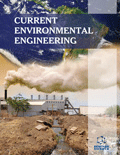Abstract
In many countries, nitrate concentrations in surface and ground water have exceeded the concentrations set by drinking water regulations. Hence, several strategies for management, control and the treatment of drinking water resources have been developed in recent years. Although several physicochemical treatment alternatives are in use, they have high construction and operational costs. Also, the secondary brine or concentrated waste is generated after physicochemical treatment processes. Hence, biological denitrification can be considered as an alternative for drinking water treatment. However, the contamination risk of the drinking water by microorganisms and the organic/inorganic nutrients during the denitrification process is the major concern and the biological treatment of drinking water may attract the negative public reaction. In order to eliminate or minimize the risks, membrane-based biological denitrification technologies, including both autotrophic and heterotrophic processes have been developed for drinking water treatment. In this review, membrane-based bioprocesses have been presented together with their advantages/disadvantages and the selection criteria. In this context, heterotrophic membrane bioreactor (MBR), extractive MBR, hydrogen-based membrane biofilm reactor (MBfR), and the autotrophic sulfur-based MBR processes have been comparatively discussed.
Keywords: Autotrophic denitrification, denitrification, drinking water, heterotrophic denitrification, membrane biofilm reactor, membrane bioreactor, sulfur based denitrification.
 33
33 1
1 1
1

